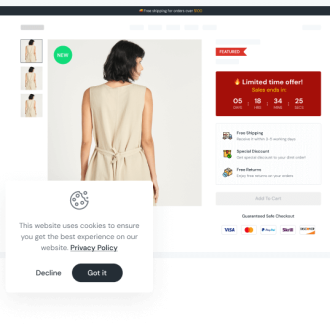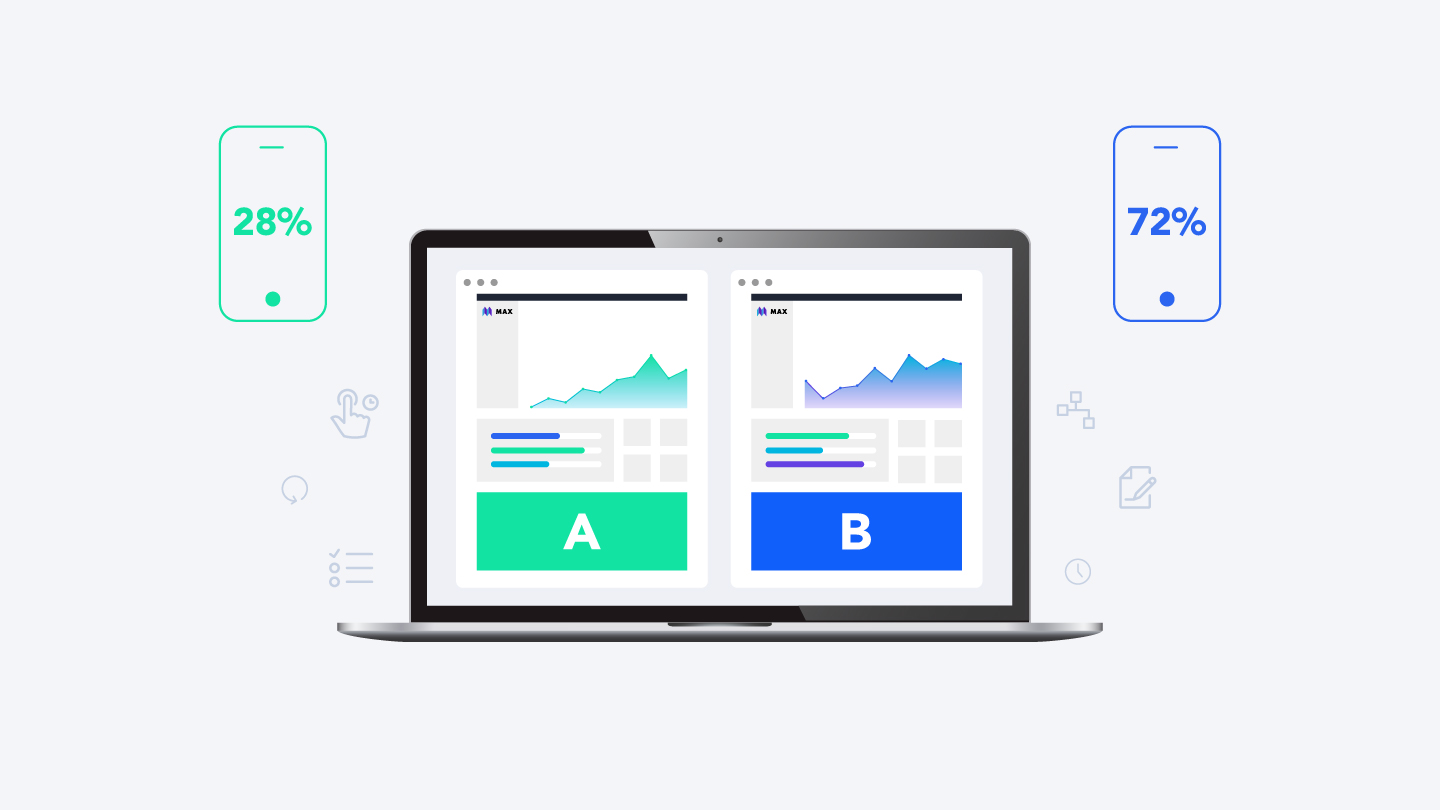What is A/B testing? And how do you implement AB testing? How does it work? And why is it so important? In this article, we’ll explore A/B testing, its meaning, purpose, and benefits. By the end, you’ll have a solid understanding of how this technology can revolutionize your marketing efforts.
What is A/B Testing?
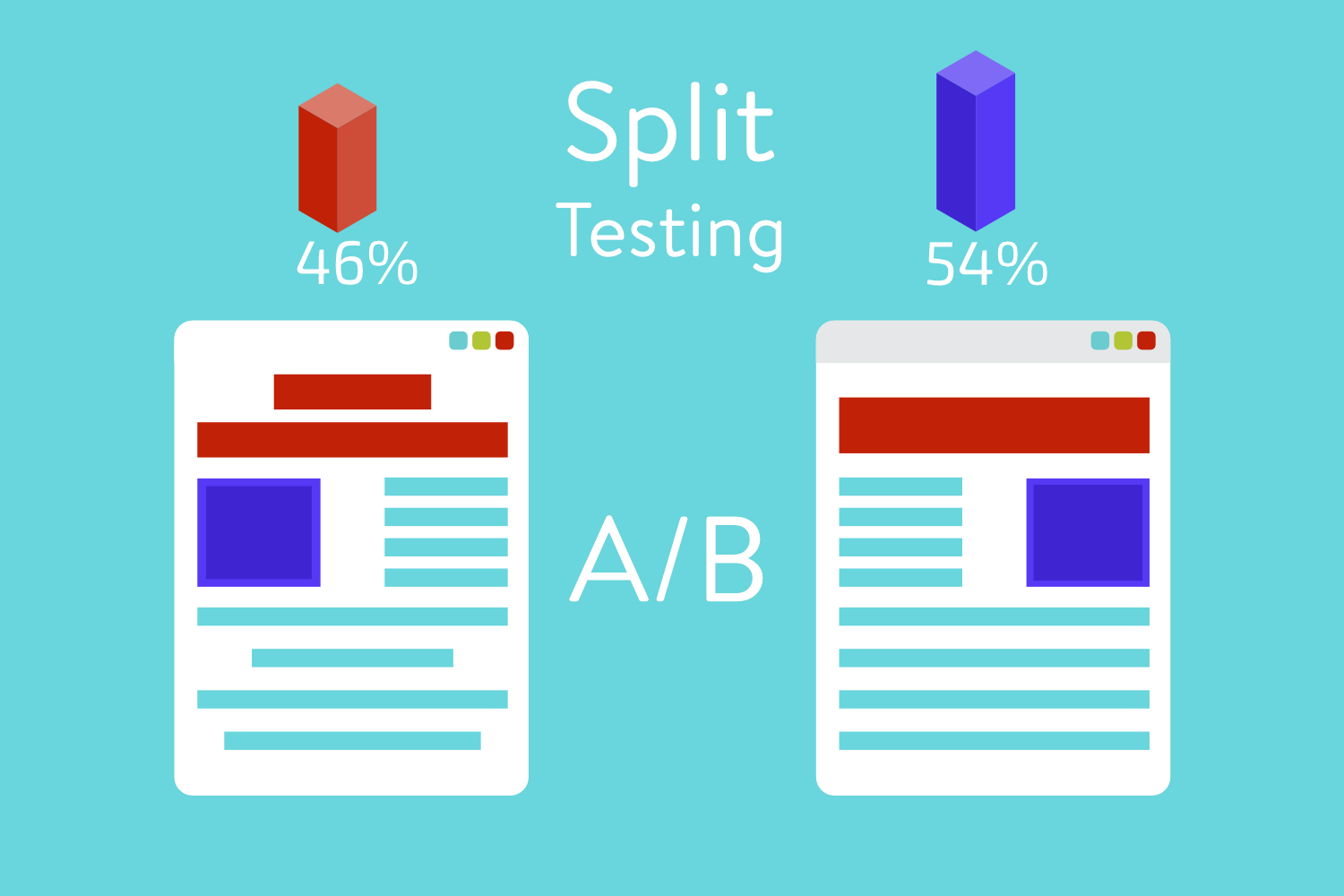
A/B Testing, also known as split testing, is a form of testing two versions of A/B under the same conditions, thereby finding out which version works better.
Using AB testing to directly compare a variation with your current experience allows you to question changes to a website or app. And then you can collect data on the effectiveness of those changes.
By measuring changes in the data, you can ensure that every change has a positive outcome. This is an integral part of the marketing process as well as other forms of business activity.
Why Should You Run A/B Testing?
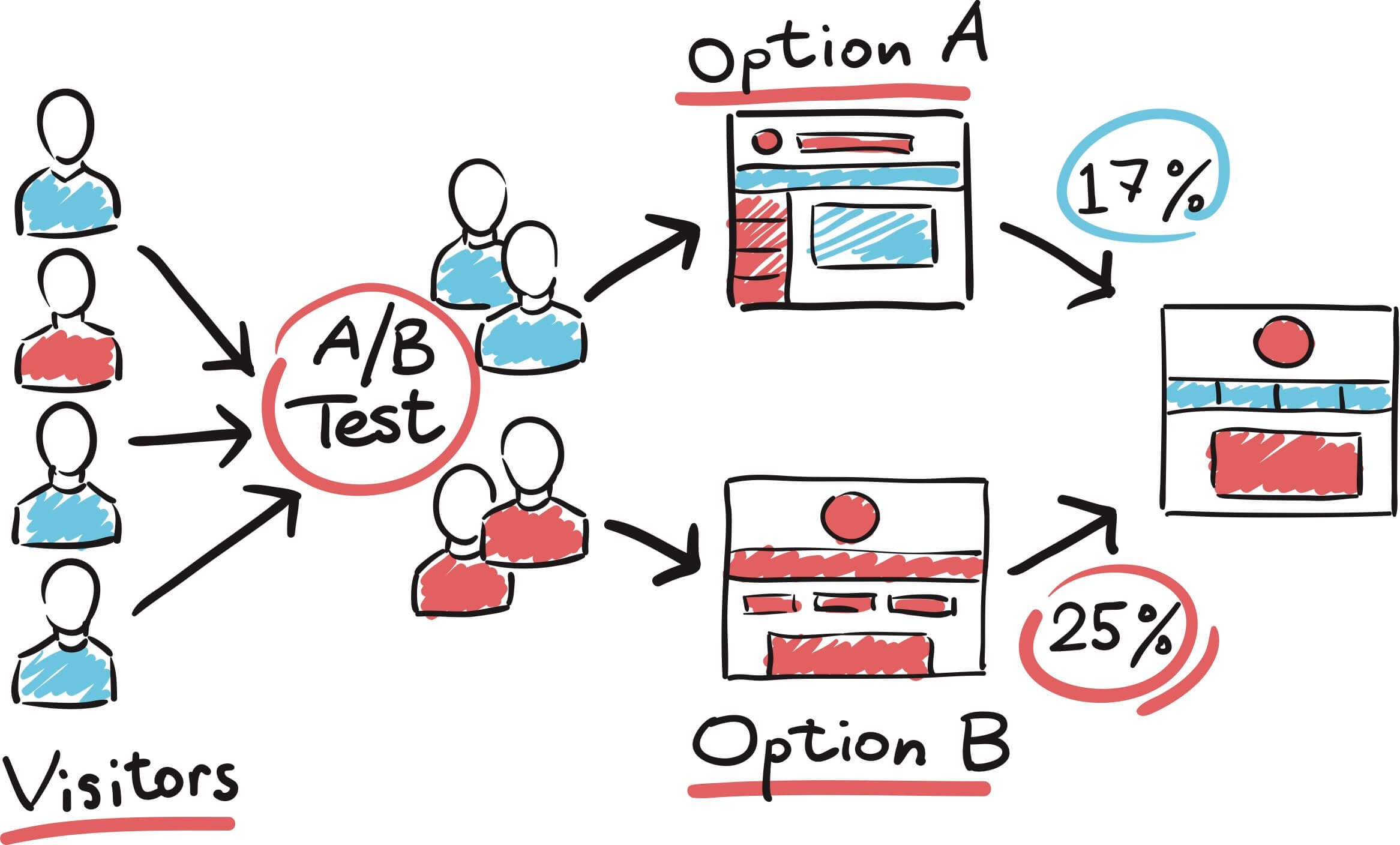
A/B testing is widely used in many fields, especially marketing. This form of testing brings many great benefits to your marketing team. Above all, these tests are valuable for businesses because they are inexpensive and produce good results. Here are some benefits of using A/B testing in marketing:
Increase Website Visits
By experimenting with different article titles or website titles, you can increase the number of people clicking on and accessing the link to your website. This helps marketers choose the right title to increase visits.
Improve Conversion Rate
By experimenting with different locations, colors, or anchor text on your CTA, you can change the number of people clicking on the CTA that leads to a landing page for your business.
This helps increase the number of people filling out the form on the website, as well as the rate at which they are converted into real customers of the business.
Reduce Bounce Rate
Every business cares about the bounce rate of its users. If this ratio is higher, it means that visitors are not interested in the article content, the text format is difficult to read, and many other problems exist.
A/B testing will help businesses find the right plan to keep visitors on their websites. Thereby reducing the bounce rate and increasing the time on the page.
Reduce Cart Abandonment Rate
E-commerce merchants find that, on average, 70% of customers leave their website with products in their shopping cart. This is detrimental to these businesses. So how to minimize this situation?
Based on A/B testing, managers can discover the causes of this situation and find suitable solutions, such as simplifying purchasing steps, diversifying products, fully displaying information, etc.
How Does It Work?
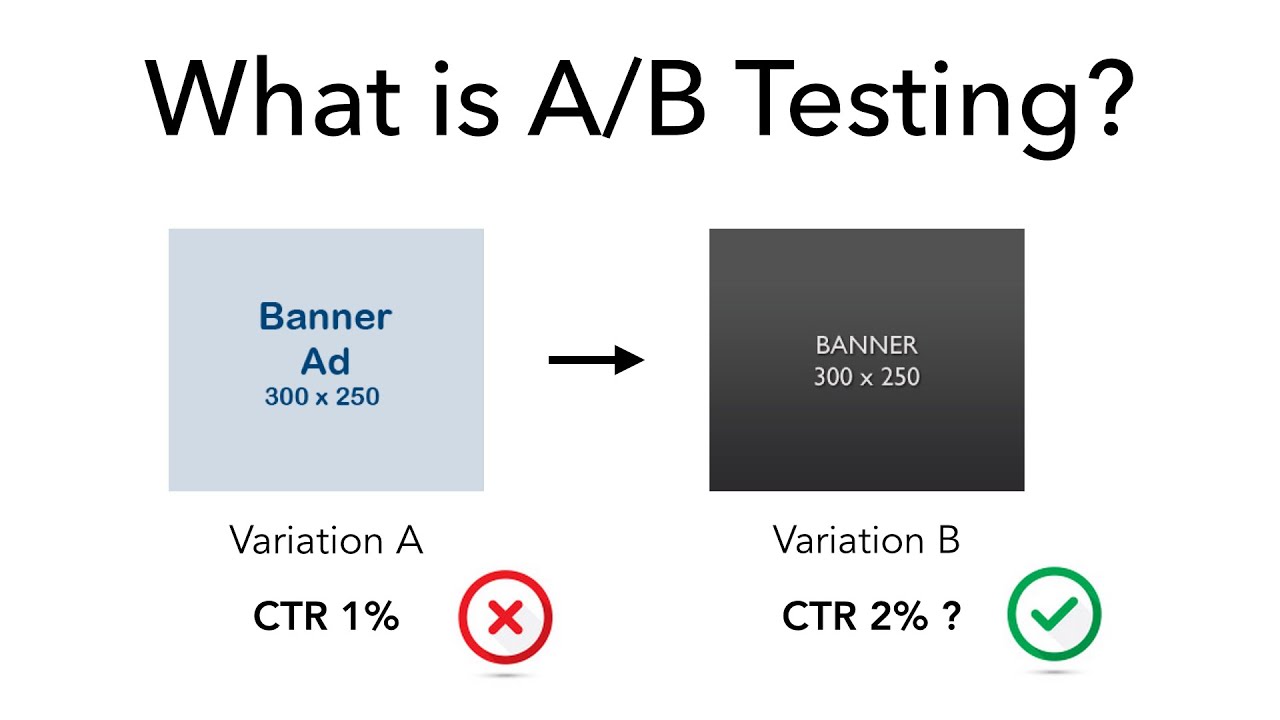
There are many different implementation methods for performing AB Testing. Below is a sample process that we provide that businesses or marketers can use to start an experiment.
Step 1: Data Collection
Before starting to perform the AB Testing method, we need to understand the conditions of your website or application. From there, you have the clearest and most detailed view, identifying what you can start to optimize. Google Analytics tool is one of the tools to help you collect the most necessary information.
Step 2: Define The Objective
After the data collection step, the next step in performing AB testing is defining the objective. This is extremely important and necessary; accurately identifying problems will help marketers connect the problems encountered with related aspects or problems. In addition, focusing on a certain goal helps limit overflow testing.
Step 3: Generating Ideas And Hypotheses
Once you’ve defined your goals, you need to start generating ideas and hypotheses A and B to start testing. Once you have a list of ideas, you need to organize and prioritize them according to the level of impact and difficulty of the campaign.
Step 4: Create Two Versions
Develop two variations of the chosen element – Version A (the control) and Version B (the variation). These versions should have one key difference that you believe will influence user behavior. For example, changing the color of the CTA button, swapping the order of elements on a website or mobile app, etc.
Step 5: Run the Experiment
After completing the above steps, Marketers can start running tests and waiting for users to access them. User interaction with each version will be measured, statistically analyzed, and compared. From there, businesses can determine which methods of operation are effective.
Step 7: Evaluate And Analyze Results
After the test is completed, the test data will be released, and you need to analyze and evaluate it. Thanks to that, you can see the difference between the two versions A and B, and be able to come up with the best and most effective business and marketing strategy.
A/B Testing Mistakes & How To Avoid Them

A/B testing can be an effective tool for optimizing your digital marketing efforts. Still, it’s critical to be aware of potential mistakes that can compromise the validity and dependability of your test results.
Here are some common AB testing mistakes and how to avoid them:
- Don’t skip the input data collection because of the rush or fear of waiting too long. Also, do not completely trust the results you have calculated because, in some cases, these data are not accurate.
- The A/B testing method is applied because we want to get relevant data for evaluation, analysis, and decision-making. Therefore, marketers or businesses should make sure to check the statistical significance of the data and track the metrics correctly.
- For AB Testing to be effective and bring results, marketers should not abuse the ability to run multiple tests and should not test two or more tests at the same time.
- AB Testing is always aimed at a certain audience. Therefore, marketers need to understand the nature of the test object so that they can limit time deviations when operating AB Testing. Some aspects may fail if you take too long or too short.
- When the test fails, do not give up, but consider this a lesson that you can learn for yourself in the next test.
Application Of A/B Testing
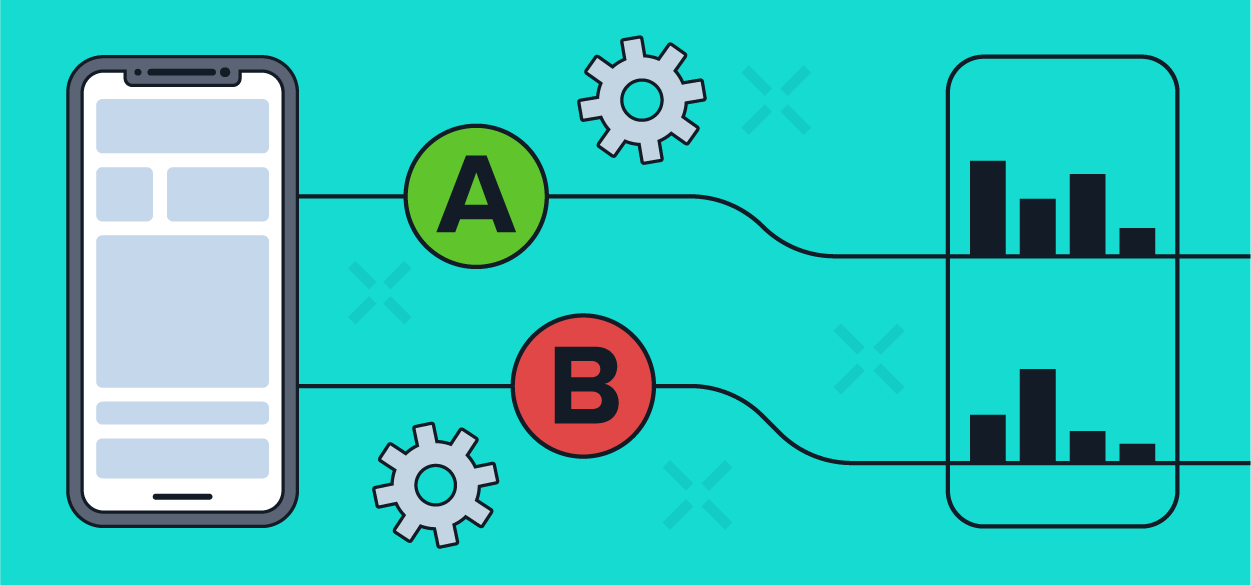
A/B testing can be applied in various areas of different industries. Here are some common examples of A/B testing applications:
For Website
The main application of A/B Testing for websites is the interface of the website and UI/UX (user experience). These are factors that have a direct impact on whether visitors are able to make conversions on the website.
With a website, you can use A/B testing for most of the factors that can affect the visitor’s behavior including images, content, forms, layout, font types, colors, etc. You can now perform the check of each element, in turn, to see if you feel it can be improved to increase the conversion rate.
For Mobile Application
A/B testing is valuable for improving mobile app performance and user engagement. Elements like onboarding experiences, app layouts, navigation menus, button placements, and notifications can be tested to enhance the user experience, increase user retention, and drive desired actions within the app.
For Email Marketing
Today’s email clients have become more strict in filtering messages; spam emails will be trashed mercilessly, yet the majority of customers today are still “attacked” by a series of emails every day.
What you need to capture and invest in is how to get customers to actively open their emails to view and act on those emails. AB testing is the solution for your Email Marketing campaign.
Factors like the subject line, sender name, email copy, images, and CTA buttons can be examined to determine which variations lead to higher open rates, click-through rates, and conversions. It helps refine email strategies and personalize content to match recipients’ interests.
For Advertisements
A/B testing is beneficial for optimizing ad campaigns on platforms like Google Ads, Facebook Ads, or the display network. Ad variations in headlines, images, ad copy, CTA buttons, and targeting strategies can be tested to identify combinations that produce higher click-through rates, conversions, or cost-per-lower conversion.
Pricing Strategies
AB testing can be used to test various pricing strategies and structures. This includes variations in price points, discounts, payment plans, upsells, or packaging options. Testing multiple pricing models helps businesses determine the best pricing approach for maximizing revenue and encouraging client conversions.
Conclusion
Overall, A/B testing is a powerful method that allows businesses to make data-driven decision-making, optimization, and achieve better results. By leveraging this method, you can enhance user experiences, increase conversions, and ultimately achieve their goals in a more effective and efficient manner. Now, with the information from Shineapps, try this A/B testing to unlock the secrets to optimizing your online success.



